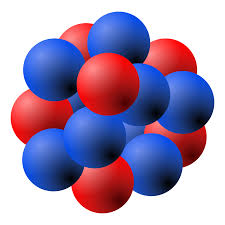6.7: Proteins in a Nutshell
- Page ID
- 6983
Learning Objectives
- Learn about proteins

Proteins are long chains of amino acids folded into precise structures that determine their functions, which are in the tens of thousands. They are the primary construction materials of the body serving as building blocks for bone, skin, hair, muscle, hormones, and antibodies. Without them we cannot breakdown or build macromolecules, grow, or heal from a wound. Too little protein impairs bodily functions and too much can lead to chronic disease. Eat proteins in moderation, at least 10 percent of the calories you take in and not more than 35 percent. Proteins are in a variety of foods. More complete sources are in animal-based foods, but choose those low in saturated fat and cholesterol. Some plant-based foods are also complete protein sources and don’t add much to your saturated fat or cholesterol intake. Incomplete protein sources can easily be combined in the daily diet and provide all of the essential amino acids at adequate levels. Growing children and the elderly need to ensure they get enough protein in their diet to help build and maintain muscle strength. Even if you’re a hardcore athlete, get your proteins from nutrient-dense foods as you need more than just protein to power up for an event. Nuts are one nutrient-dense food with a whole lot of protein. One ounce of pistachios, which is about fifty nuts, has the same amount of protein as an egg and contains a lot of vitamins, minerals, healthy polyunsaturated fats, and antioxidants. Moreover, the FDA says that eating one ounce of nuts per day can lower your risk for heart disease. Can you be a hardcore athlete and a vegetarian?
The analysis of vegetarian diets by the Dietary Guidelines Advisory Committee (DGAC) did not find professional athletes were inadequate in any nutrients, but did state that people who obtain proteins solely from plants should make sure they consume foods with vitamin B12, vitamin D, calcium, omega-3 fatty acids, and choline. Iron and zinc may also be of concern especially for female athletes. Being a vegetarian athlete requires that you pay more attention to what you eat, however this is also a true statement for all athletes. For an exhaustive list that provides the protein, calcium, cholesterol, fat, and fiber content, as well as the number of calories, of numerous foods, go to the website, http://www.soystache.com/protein.htm.
everyday connection
Getting All the Nutrients You Need—The Plant-Based Way
Below are five ways to assure you are getting all the nutrients needed on a plant-based diet;
- Get your protein from foods such as soybeans, tofu, tempeh, lentils, and beans, beans, and more beans. Many of these foods are high in zinc too.
- Eat foods fortified with vitamins B12 and D and calcium. Some examples are soy milk and fortified cereals.
- Get enough iron in your diet by eating kidney beans, lentils, whole-grain cereals, and leafy green vegetables.
- To increase iron absorption, eat foods with vitamin C at the same time.
- Don’t forget that carbohydrates and fats are required in your diet too, especially if you are training. Eat whole-grain breads, cereals, and pastas. For fats, eat an avocado, add some olive oil to a salad or stir-fry, or spread some peanut or cashew butter on a bran muffin.
Contributors and Attributions
University of Hawai’i at Mānoa Food Science and Human Nutrition Program: Allison Calabrese, Cheryl Gibby, Billy Meinke, Marie Kainoa Fialkowski Revilla, and Alan Titchenal


